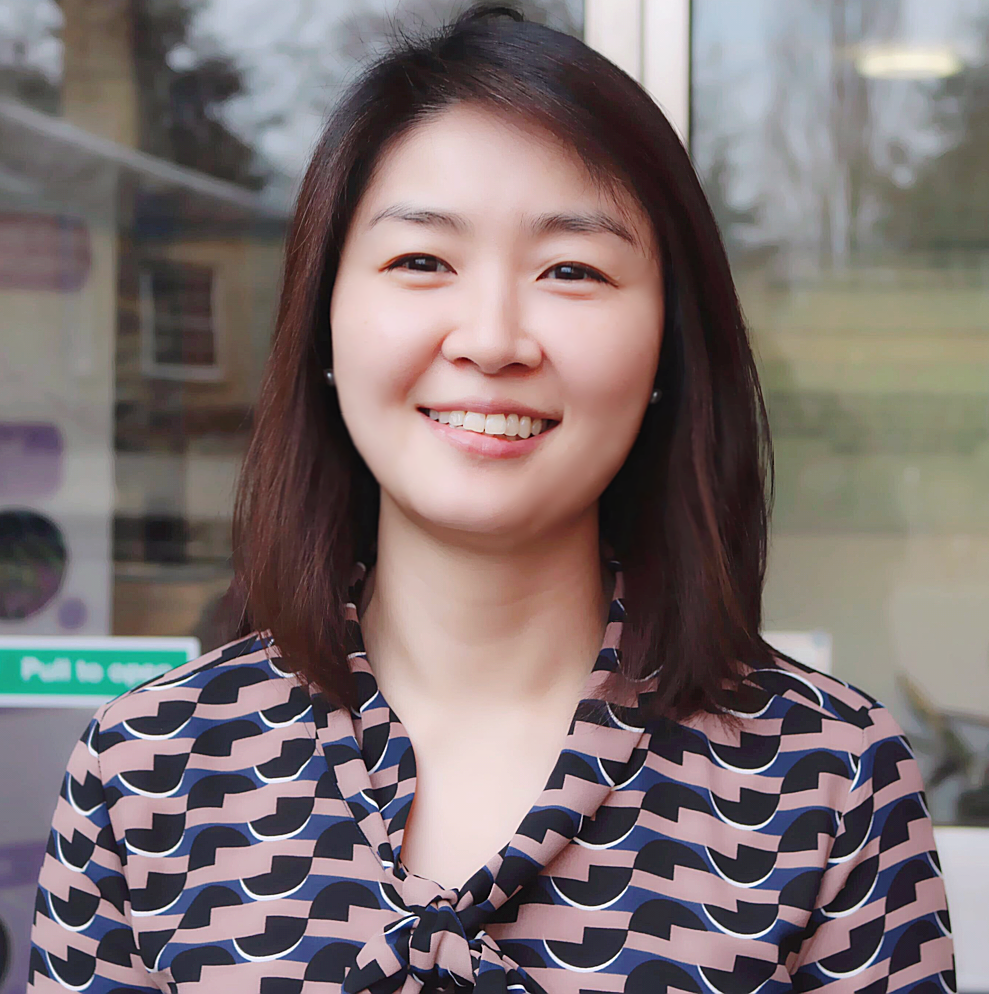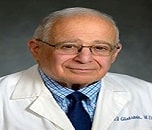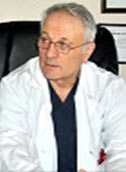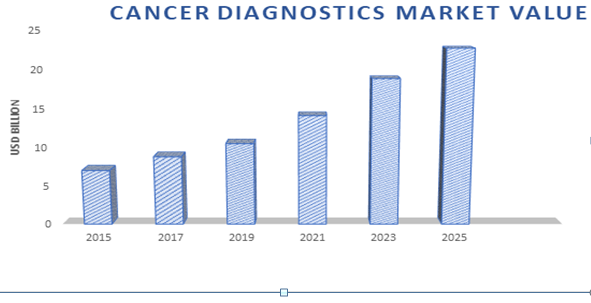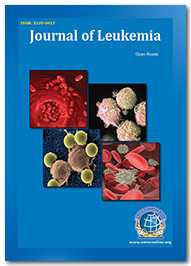Theme: Advancement in cancer stem cells and explore novel techniques in current research
Cancer Stem Cells 2019
Conference Series LLC Ltd heartily welcomes you to International Conference on Cancer stem cells. Which is going to be held during October 10-11, 2019 in Paris, France Cancer Stem Cells is going to be one of the biggest Conferences dedicated to Oncology and Stem cell studies. The theme of this meeting is “Advancement in cancer stem cells and Explore novel techniques in current research” and it features a 2-day Scientific Colloquium addressing the major advancements, provocations and the resolutions adopted.
Cancer stem cells 2019 is all to set to put forth a platform for the excellences and professionals, Research individuals, and Academic individuals to facilitate the research and applications and the findings on advancements and the clinical uses, which is underpinned by the basic science of Pharmacology, with added focus on the application of oncological principles, Processes and methods in the World of Cancer.
Cancer is a phenomenon of excessive and uncontrolled growth and division of cells, which might be due to mutations in Genetic material such as DNA and RNA which activates genes that trigger cell division or incorporation of genes that might play a important role in deletion or addition of natural anti-cancer mechanisms. Around the world and in the UK, around 280,000 people per annually are diagnosed with cancer and, among those diagnosed, around 1.5 million face death.
Due to lack of cancer stem cells and deficit of new innovation that cure and treat cancer with the help of cancer stem cells a large group of people face mortality. If cancer stem cells are the first driver of cancer growth and metastasis, then effective cancer treatments should attack the CSCs. Shrinking a cancerous neoplasm or reducing the glut of leukemic cells within the blood could provide temporary relief, however won't provide a long cure if CSCs aren't eliminated.
What’s additional, if solely the CSCs are eliminated, the rest of the cancer cells within the body are attacked by the system or die out naturally since cancer cells that don't seem to be stem cells by definition don't have the power to breed. Understanding Cancer stem cells can also help us modify current treatments for maximum effect. Researchers at Stanford’s Ludwig Center for Cancer Stem Cell Research and Medicine, for instance, discovered the reason that stem cells, including cancer stem cells, are resistant to the ionizing radiation used in many cancer treatments.
Understanding this resistance may in the future help researcher find compounds that undermine this process and make Cancer stem cells vulnerable to radiation damage. Another example concerns immune therapies in which the body’s own immune system is trained to attack cancer cells, which in the past researchers had high hopes would be effective against skin cancer. The therapies failed in clinical trials, and Stanford researchers showed why: the targets that the immune system was trained to attacked belonged not to the cancer stem cells, but to slightly different daughter cells.
The immune therapies seemed effective at first as they attacked the daughter cells, but they left the skin cancer stem cells untouched and therefore it could not cure the cancer. Recent advances in our understanding of cancer have revealed why many current treatments may be ineffective. Within any tumour, there may be many different kinds of cancer cell, only some of which are targeted by a particular treatment. Although a therapy may be successful in killing some of these sub-populations of cells, others survive and these then go on to kill the patient.
Studies from the Researchers have proven that cancer cells are not all the normal. Within a malignant tumour or among the circulating cancerous cells of a blood, there can be a wide range of different cells. The theories of the cancer stem cell states that among all indigenously multiplying cancer cells, some serve as stem cells which divide among themselves to sustain the cancer, most of these cancer stem cells which are like normal stem cells normally divide and sustain the organs and tissues.
In this view, cancer cells which deviate from the rule of stem cells are the cells which are the cause issue, but they cannot withstand an attack on our bodies over a period of long term.The insight of the cancer is initially started and driven by a smaller group of stem cells which has major important implications. When viewed in a particular situation or instance, a majority of cancer stem cell treatments and therapies are evaluated based on their ability to restrict a tumour which grows indigenously, but if the cancer stem cell therapies fails to restricting or killing the cancer stem cells, the tumour will be soon growing back.
And considering another conclusion which is that it is the cancer stem cells that give rise to metastases which is a phenomenon of development of a new mutation from the distant place of origin of the tumour and can also act as a sanctuary of cancer cells that might cause a sudden regrowth after treatment like surgery, radiation or chemotherapy which helps in elimination of the all observable and noticeable signs of a malignancy and other forms of cancer.
One of the most important categories of cancer stem cell theory that concerns how the study of how cancers initially rises from. The main case where the cancer cell deviates the rule of normal cell is But researchers at the Ludwig Centre observe that our normal stem cells are the only cells that reproduce themselves and are therefore around long enough to accumulate all the necessary changes to produce cancer
Target Audience:
Eminent personalities, Directors, CEO, President, Vice-president, Organizations, Associations Heads and Professors, Research scientists, Cancer Stem Cell laboratory heads, Post-docs, Students other affiliates related to the area of Cancer Stem cells research, regenerative medicine can be as Target Audience.
Stem Cells are Biological cells which will separate into different sorts of cells and may divide to deliver same quite cells in large numbers. They are found in cellular life forms. In mammals, there are a unit 2 wide varieties of stem cells: embryonic stem cells, that are isolated from the inner cell mass of blastocysts, and adult stem cells, that square measure found in numerous tissues. The most well-established and wide used stem cell treatment is that the transplantation of blood stem cells to treat diseases and conditions of the blood and immune system, or to revive the blood system when treatments for specific cancers.
The Cancer stem cell (CSC) speculation hypothesizes the presence of a bit people of disease cells with characteristic properties taking into consideration protection from ancient radio-chemotherapy regiments and swollen pathologic process potential. Clinically, the forceful plan of CSCs has been perceived to connect with swollen tumor repeat, pathologic process unfolds, and usually poor patient result over numerous malignant growth subtypes. Separation of CSCs has been accomplished through use of cell surface markers, whereas the helpful contrasts among CSCs and remaining neoplasm cells are represented through enlargement, separation, and constrictive weakening measures.
• Epigenetics
• Stem Cell medical aid
Existing cancer treatments have largely been developed based on animal models, wherever therapies ready to promote neoplasm shrinkage was deemed effective. However, animals don't offer an entire model of human sickness. Especially, in mice, whose life spans don't exceed 2 years, tumor relapse is tough to review.
Stem-cell therapy is that the use of stem cells to treat or stop a sickness or condition .Bone marrow transplant is that the most generally used stem-cell therapy; however some therapies derived from epithelial duct blood are in use. Analysis is current to develop numerous sources for stem cells, also on apply stem-cell treatments for neurodegenerative diseases and conditions like polygenic disorder and cardiovascular disease, among others. Essential microorganisms are the body's rough materials cells from that one another cell with specific limits are created. New mother cells or stem cells either complete up being new dedifferentiated cells (self-restoration) or land up stem cells (division) with an additional specific limit, as an example, platelets, mind cells, cardiac muscle cells or bone cells. No alternative cell within the body has the trademark ability to form new cell types.
A stem cell bank may be a facility that stores stem cells for future use. Epithelial duct blood is blood that continues to be within the placenta and within the connected duct when giving birth. Wire blood is obtained from the duct at the time of birth, when the wire has been detached from the newborn. Wire blood is collected as a result of it contains stem cells, as well as haematopoietic cells, which might be accustomed treat biological process and genetic disorders. Cord blood contains all the traditional parts of blood - red blood cells, white blood cells, platelets and plasma. However it's additionally wealthy in haematopoietic (blood-forming) stem cells, like those found in bone marrow. Cord blood may be a wealthy supply of blood stem cells. Stem cells are the building blocks of the blood and system. They need the flexibility to transform alternative varieties of cells, so that they will facilitate repair tissues, organs, and blood vessels and may be accustomed treat a bunch of diseases.
5. Biomarkers of Cancer Stem Cells
Biomarkers have a particularly high top side for therapeutic interventions in cancer patients. Most cancer biomarkers contains proteins or altered segments of deoxyribonucleic acid, and area unit expressed altogether cells, simply at higher rates in cancer cells. There has not however been one, universal growth biomarker; however there's a biomarker for each sort of cancer. These growth biomarkers are accustomed track the health of tumors, however cannot function the only real diagnostic for specific cancers. Samples of tumoral markers accustomed follow up cancer treatment are the Carcinoembryonic antigen (CEA) for large intestine cancer and therefore the Prostate Specific antigen (PSA) for glandular cancer. In 2014, Cancer analysis known current growth Cells (CTCs) and current growth DNA (ctDNA) as metastasizing growth biomarkers with special cellular differentiation and prognostic skills. Innovative technology must be controlled to work out the total capabilities of CTCs and ctDNA, however insight into their roles has potential for brand new understanding of cancer evolution, invasion and metastasis.
6. Cancer Stem Cells and Metastasis
The spread of cancer from one half of the body to a different part or to lymph nodes, that don't seem to be directly connected to every different is termed cancer metastasis. Cancer is taken into account as a deadly sickness in the main as a result of its ability to spread within the body. This metastasis takes place through the blood stream or the lymph system. The foremost common metastasis components of the body are the lungs, bones, liver and brain. The metastatic cancer cells doesn't match the feature of the cells wherever it had been found however it resembles the first cancer cells i.e. it had been thought-about as a next stage of the first cancer cells. All pathological process cancers are thought-about as advanced cancers. The cancer survival and treatment is influenced by whether or not the cancer cells are localized or spreads to alternative elements. Once the cancer starts to spread it's terribly tough to manage. Although the treatment is sustained, it'll be solely palliative care. The pain killing are principally by Anti-cancer medication i.e. therapy. Cancer Management could be a multidisciplinary approach that deals with the various kinds of cancer complications and its preventive measures. Cancer Conferences is a very important key for each instructional and clinical steering for managing cancer patients.
• Pathophysiology
• Organ-Specific Targets
• Diagnosis & Management
• Multimodal Therapies
Cancer cells area unit cells gone wrong in different words, they not reply to several of the signals that management cellular growth and death. Cancer cells originate among tissues and, as they grow and divide, they diverge ever away from normalcy. Over time, these cells become more and more immune to the controls that maintain normal tissue and as a result, they divide quicker than their progenitors and settle down obsessed on signals from different cells. Cancer cells even evade programmed necrobiosis, despite the very fact that their multiple abnormalities would usually build them prime targets for necrobiosis. Within the late stages of cancer, cells break through traditional tissue boundaries and spread to new sites within the body
• Therapeutic Target for Cancer
• Hormone Therapies
• Histology
• Pathology
• Cancer Stem Cells and Drug Resistance
8. Cancer Stem Cells in Brain Gliomas
A glioma could be a kind of tumor that starts within the glial cells of the brain or the spine. Gliomas comprise regarding thirty % of all brain tumors and central nervous system tumors, and eighty % of all malignant brain tumors.These brain tumors area units usually diagnosed older adults, counting on the kind of glioma. Brain tumors area unit slightly additional seemingly to occur in males. Most gliomas that occur in youngsters area unit low grade.Prior radiation to the brain could be a risk issue for malignant gliomas. Some genetic disorders additionally increase the chance of development of those tumors in youngsters however seldom in adults.There are not any mode risk factors related to malignant gliomas. This includes alcohol, cigarette smoking, or mobile phone.
Breast cancer is marked mutually of the leading causes of malignancy-related morbidities worldwide. In spite of aggressive interventions, the inevitableness of relapse and metastasis severely impede survival rates. Mounting proof highlight the insidious role of cancer stem cells (CSCs), a little but important population of undifferentiated cells that drive growth progression, spread and resistance to standard therapy. The nature and significance of breast CSCs remains poorly understood, and even controversial by several researchers. This review discusses the origins, biomarkers, signalling pathways, restrictive mechanisms, and targeted therapy of breast CSCs
However, despite offered interventions, patients below remission should still develop carcinoma relapse and metastasis. Accumulating proof suggests that the underlying presence of a tiny low universe of undifferentiated cells, termed carcinoma stem cells (BCSCs), area unit presumably make to growth progression, spreading and resistance to traditional therapy.
10.Therapies targeting Cancer Stem Cells
Traditional therapies against cancer, chemo- and radiation therapy have multiple limitations that result in treatment failure and cancer repetition. These limitations are associated with general and native toxicity, whereas treatment failure and cancer relapse are thanks to drug resistance and self-renewal, properties of a little population of growth cells known as cancer stem cells (CSCs). These cells are concerned in cancer initiation, maintenance, metastasis and repeat. Therefore, in order to develop economical treatments that may induce a long clinical response preventing growth relapse it's necessary to develop medication which will specifically target and eliminate CSCs. Recent identification of surface markers and understanding of molecular feature related to CSC makeup helped with the look of effective treatments. during this review we have a tendency to discuss targeting surface biomarkers, communication pathways that regulate CSCs self-renewal and differentiation, drug-efflux pumps concerned in programmed cell death resistance, micro environmental signals that sustain CSCs growth, manipulation of miRNA expression, and induction of CSCs programmed cell death and differentiation, with specific aim to hamper CSCs regeneration and cancer relapse. a number of these agents are underneath analysis in diagnosis and clinical studies, most of them for victimization together with ancient therapies. The combined therapy victimization standard antitumor medication with CSCs-targeting agents might provide a promising strategy for management and eradication of various kinds of cancers.
The gastric epithelium is continuously regenerated by gastric stem cells, which give rise to various kinds of daughter cells, including parietal cells, chief cells, surface mucous cells, mucous neck cells, and enter endocrine cells. The self-renewal and differentiation of gastric stem cells need delicate regulation to maintain the normal physiology of the stomach. Recently, it was hypothesized that cancer stem cells drive the cancer growth and metastasis. In contrast to conventional clonal evolution hypothesis, only cancer stem cells can initiate tumor formation, self-renew, and differentiate into various kinds of daughter cells. Because gastric cancer can originate from gastric stem cells and their self-renewal mechanism can be used by gastric cancer stem cells, we review here how critical signaling pathways, including hedgehog, Want, Notch, epidermal growth factor, and bone morphogenetic protein signaling, may regulate the self-renewal and differentiation of gastric stem cells and gastric cancer stem cells. In addition, the precancerous change of the gastric epithelium and the status of isolating gastric cancer stem cells from patients are reviewed.
12. Epigenetic Identity in Cancer Stem Cells
Epigenetic mechanisms are deployed in response to advanced profiles of cell-extrinsic, cell-cell, and cell-intrinsic signals and are in command of the establishment, maintenance, and refinement of cell identity and performance that happens throughout development and adult life . Indeed, Associate in Nursing increasing vary of studies has begun to elucidate but chemical compound methylation, protein and substance modification, non-coding RNAs (ncRNAs), RNA writing, and nuclear reorganization orchestrate vegetative cell self-renewal and maintenance, lineage restriction, lineage commitment, cell fate specification, progressive stages of maturation, and terminal differentiation. These restrictive mechanisms seem to push the formation of relatively “open” and “poised” epigenetic states permissive for transcriptional activity that are associated with multi-lineage potential in stem and antecedent cells and to mediate the execution of lineage-specific natural phenomenon programs, at the side of the silencing of genes associated with alternate cell fates, in extra mature cellular species.
Ageing may be a advanced method that involves each cell and organ within the body which ends up in the deterioration of the many body functions over the period of time of a personal (Clark, 1999). With age, as an example, the skin loses its snap and injuries heal a lot of slowly than in childhood. a similar holds true for bones, that flip brittle with age and take for much longer to heal once broken. Respiratory organ tissue additionally loses its snap and also the muscles of the skeletal structure shrink. Blood vessels accumulate fatty deposits and diminish versatile, which ends in coronary-artery disease. The reduced capability to regenerate burned tissues or organs Associate in nursing an enlarged propensity to infections and cancers are in all probability the foremost outstanding hallmarks of senescence.
14. Stem Cell Biology and Advances
Stem cells have the exceptional potential to be converted into many alternative cell sorts, primarily while not limit to refill alternative cells as long because the person or animal remains alive, providing huge hope of natural action presenile dementia, repairing broken spinal cords, treating urinary organ, liver and respiratory organ diseases and creating broken hearts whole. Till recently, scientists primarily worked with 2 sorts of stem cells from animals and humans: embryonic stem cells and non-embryonic “somatic” or “adult” stem cells. Recent breakthrough creates it doable to convert or “reprogram” specialized adult cells to assume stem stem-like cells with totally different technologies. The review can in short discuss the recent progresses during this space.
15. Stem cell treatment: applications and obstacles
A considerable quantity of retrospective information is accessible that describes acknowledged mesenchyme stem cells (MSCs). However, there's still little data accessible that documents the properties of a master's degree in its native surroundings. Though the precise identity of MSCs remains a challenge, additional understanding of their biological properties is going to be greatly advanced by analyzing the mechanisms that govern their selfâ€renewal and differentiation potential. This review begins with the present state of information on the biology of MSCs, specifically with relevancy their existence within the adult organism and postulation of their biological niche. Whereas MSCs area unit thought-about appropriate candidates for cellâ€based ways attributable to their intrinsic capability to selfâ€renew and differentiate, there's presently very little data accessible relating to the molecular mechanisms that govern their vegetative cell potential. We have a tendency to propose here a model for the regulation of master's degree differentiation, and up to date findings relating to the regulation of master's degree differentiation area unit mentioned. Current analysis efforts centered on elucidating the mechanisms control master's degree differentiation ought to facilitate the look of best in vitro culture conditions to reinforce their clinical utility cell and sequence therapy.
Market Analysis
Conference Series llc ltd invites all the participants through the globe to join at International Conference on Cancer Stem Cells. Which is going to be held during October 10-11, 2019, Paris, France which include Symposia, keynote, Oral, Poster presentations, and Exhibitions. Cancer Stem Cell 2019 is a specially drafted under Oncology conference. The main theme of the conference is Advancement in cancer stem cells and explore novel techniques in Cancer stem cell research” which covers a wide range of critically important sessions.
For More details please visit: https://cancerstemcells.conferenceseries.com/
Importance & Scope
Globally Cancer is the major leading cause of death. It’s important to remember that cancer is not a single disease; more than 200 cancer diseases are prevail. All are unique diseases, which require different kind of treatment. Treatments that work for some cancers might not work for others and sometimes there is no response for treatments. And only a continuous search globally for a cure will help us triumph over this disease. The conference hopefully will provide with an Platform for the masterminds among delegates and speakers from Universities and Institutes, Scientists and Industry Professionals to interact among each other’s working in the field of oncology and Stem Cell.
Cancer stem cells 2019 will also explore the new ideas and concepts on global scale and the topics Cancer Science & Therapy, Cancer Cell Biology, Organ-Defined Cancers, Tumour Science, Cancer Genetics, Clinical Cancer Research, Cancer & Tumour Immunology, Cancer : Genomics & Metabolomics, Targeted Cancer Therapy, Stem Cell Therapy, Cancer Biomarkers, Tumor Virology, Cancer Nanotechnology, Cancer Treatment & Therapeutics, Cancer Clinical Trials, Cancer Drug Diagnostics & Therapeutics, Frontiers in Cancer Science, Precision Medicine & Cancer Therapy, Cancer Management & Prevention, Economic Impact of Cancer Therapy.
Conference highlights:
Biomarkers of Cancer Stem Cells
Cancer Stem Cells and Metastasis
Cancer Stem Cells in Brain Gliomas
Therapies targeting Cancer Stem Cells
Epigenetic Identity in Cancer Stem Cells
Stem Cell Biology and Advances
Stem cell treatment: applications and obstacles
Why France?
Since 2015 nearly 385,000 new cases of cancer has been recorded in France. In men at the age of 68, 211000 new cases and in women at the age of 67, 174000 new cases. Three million people are cancer survivors, i.e. 2 in 3 people. Over 50,000 new cases are recorded in every year. Over last 20 years cancer mortality has decreased. However cancer is the leading cause for death in France. To the average of Euro 10,000 has to be spent per patient per year.
Cancer Diagnostics Market:
The increased awareness and support from the associations of Government, academia and fields of research along with other sectors in stem cells played a prominent role in the field of Cancer study.The global oncology diagnostics market is based on technology, application, and region. Factors like age and increase in the size of population and cancer cases majorly creating opportunity for diagnostics'.
The size of global market cancer diagnostics is to reach $24.00 billion by the end of 2020 from $07.10 billion back in 2015. Growing prevalence of cancer cases, constant advances in technology and diagnostics, and increasing demand for effective tests of screening are some of the main factors prompting the demand for tools of diagnosis across the world.
|
|
The reports has sights on the extensive applications & uses of stem cells against wide areas of tumors including glandular, connecting tissue, Respiratory, Brain, colorectal, Ducts, bladder, liver, and reproductive, and gastric tumor.
Out of all the tumor forms, breast cancer extended for the leading share of the overall gross in 2015-2016 owing to its rising impact and presence of relatively large number of stem cell therapeutics for this case of tumor . However, the fact that autologous transplant has taken chemotherapy to another level and is likely to supplement the growth of the area. Adding to this, therapies of stem cell have been successful in combating toxicity of Cardiac observed in majority The lung cancer segment is projected to experience significant growth over the forecast period. The growth of the segment can be attributed to ongoing developments to curb the rising incidence of lung malignance worldwide. In March 2016, a team of researchers at the Department of Cancer Biology, Mayo Clinic developed a combination therapy using auranofin, a rheumatoid arthritis drug, with an experimental targeted agent to hamper the growth of lung CSCs.
Cancer associations in the world
• American cancer society
• American childhood cancer organization
• Acoustic neuroma association of Australia
• American gastroenterologist association
• Association of international cancer research
• Association for the study of lung cancer
• Association of community cancer centers
• Association of population-based cancer registers in Germany
• Australian Association of smoking cessation professionals
• Australian prostate cancer research
• Avon breast cancer crusade
• Bangladesh cancer society
• Breast screen Australia program
• Bulgarian cancer association
• Canadian Association of pharmacy in oncology
• Canadian cancer society
• Cancer Association of South Africa
• Cancer Council Australia
• Cancer research institute
• Cancer Research UK
• Cancer society Brazil
• Children’s cancer association
• Children’s cancer and leukemia group
• Dutch cancer society
• Dutch cancer registry
• Egypt cancer society
• European organization for research and treatment of cancer
• Foundation for women’s cancer
• French cancer society
• German cancer society
• German society of radiation oncology
• Health Canada
• Hong Kong Neuro-oncology society
• Indian cancer society
• International agency of research and cancer
• International lung cancer consortium
• Japan lung cancer society
• Kidney cancer association
• Korean cancer association
• Leukemia & lymphoma society
• Lung cancer Canada
• Ministry of health – Armenia
• National brain tumor society
• National cancer institute
• National lung cancer partnership
• Oral cancer foundation
• Ovarian Cancer Australia
• Pancreatic cancer action network
• Prostate cancer Canada
• Saudi oncology society
• Singapore cancer society
Pharmacy companies dealing with cancer drugs
• Roche
• Novartis
• Celgene
• Johnson & Johnson
• Bristol-Myers Squibb
• Lilly
• Takeda
• AstraZeneca
Conference Highlights
- Stem cell
- Cancer Stem cells
- Stem cell therapy
- Stem Cell Banking
- Biomarkers of Cancer Stem Cells
- Cancer Stem Cells and Metastasis
- Tumor cell science
- Cancer Stem Cells in Brain Gliomas
- Breast Cancer Stem Cells
- Therapies targeting Cancer Stem Cells
- Gastric Cancer Stem Cells
- Epigenetic Identity in Cancer Stem Cells
- Stem Cell Aging
- Stem Cell Biology and Advances
- Stem cell treatment: applications and obstacles
To share your views and research, please click here to register for the Conference.
To Collaborate Scientific Professionals around the World
| Conference Date | October 10-11, 2019 | | ||
| Sponsors & Exhibitors |
|
||
| Speaker Opportunity Closed | |||
| Poster Opportunity Closed | Click Here to View | ||
Useful Links
Special Issues
All accepted abstracts will be published in respective Our International Journals.
- Journal of Cancer Science & Therapy
- Journal of Leukemia
- journal of bone marrow and stem cell research
Abstracts will be provided with Digital Object Identifier by







